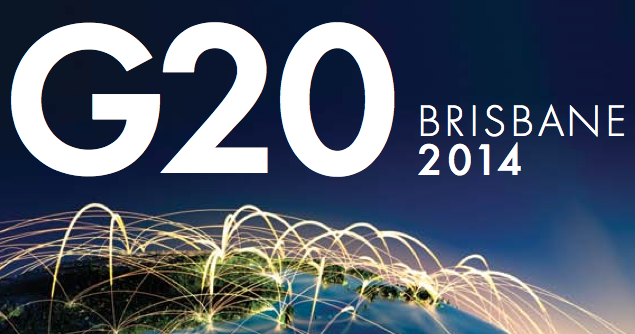Getting the Basics Right: A G20 Agenda

According to the World Bank’s Sri Mulyani Indrawati and Bertrand Badré, the G20 of the future can play a powerful role in changing the world’s fortunes if it addresses two fundamental challenges: building infrastructure in developing countries and stopping corruption.
Cities, as hubs of economic activity, inspire urbanisation by providing jobs and services unavailable in rural areas, and generate more than 80 per cent of global GDP today. By 2030, more than 65 per cent of the global population will live in urban areas. These people will need uninterrupted electricity to power their households, clean drinking water and sanitation to safeguard their health, safe transport between their home and work and reliable access to information communication technologies in their communities.
Building a better world
As it currently stands, the need to invest funds into the infrastructure of developing and emerging economies has never been more pressing – today 1.2 billion people live without electricity, 2.8 billion cook their food with solid fuels (such as wood), one billion people live more than two kilometres from an all-weather road and 60 per cent of the world’s population lack internet access.
In emerging market and developing economies alone, it is estimated that an additional US$1-1.5 trillion in annual investment will be required through to 2020 to meet infrastructure needs. The price
tag goes up by a further $170-220 billion a year when you factor in the spending required to reduce greenhouse gas emissions, and adapt cities and economies to the challenges of increasingly volatile
climates. Investing in climate-conscious infrastructure today, however, will have an intergenerational payback curve that far exceeds any additional upfront capital costs.
However, these numbers, while large, are insensitive. The story behind the infrastructure investment gap is brutally human. The lack of infrastructure takes a toll far beyond the need to connect people
to jobs or goods to markets. It’s the toll on a child, who cannot study at night because there is no electricity. It’s the thousands of girls and boys who die simply because they lack sanitation. It’s the mother who cannot reach the relative safety of a local clinic during childbirth because the roads in her town cannot withstand heavy rain.
Closing the infrastructure gap
It all highlights the wisdom of Australia’s leadership in making infrastructure a central part of the G20 agenda in 2014. Today, however, public purses are stressed and incapable of providing the
volume of funding required to close the infrastructure gap. Additional sources of funding and finance will need to be tapped in order for governments to deliver the necessary investments into their nations’ infrastructure stocks. Official development assistance can play its part, but the size of the infrastructure investment gap clearly highlights the need for solutions involving the private sector.
It’s why the World Bank Group is now working on an initiative to help leverage resources for infrastructure. A key challenge with financing infrastructure in emerging markets and developing economies is not a shortage of capital but a shortage of capital willing to invest in the more complex and riskier investments that are typical of infrastructure projects in emerging markets and developing economies. The World Bank Group is aiming to take an inclusive approach, and create an open platform to pool expertise and resources to address regulatory, design and financing issues. The goal is to attract external financing,including from the private sector, by improving project quality and the underlying investment climate.
However, getting more money invested in infrastructure is just one piece of the jigsaw in order to close the investment gap. Poor allocation and construction inefficiencies can undermine the developmental benefits of infrastructure and are quite simply a waste of money. For infrastructure to deliver on the benefits of its promise, process and procedures that govern project selection and construction need to be sound and free from corruption. This helps to avoid building inappropriate projects or incurring unjustified time and cost overruns during construction.
Focus on corruption
The global construction industry is expected to grow to about $12 trillion a year by 2020. However, the estimates of losses to corruption are daunting. Transparency International estimates corruption in the construction industry is estimated to accrue financial losses ranging between 10 and 30 percent of the value of all publicly funded construction projects. While the global construction industry figure includes private construction, we can safely assume that corruption could exceed $1 trillion across the world’s construction projects by 2020.
The losses to corruption stem from far more than just kickbacks for the awarding of contracts. It can start at the concept stage, with large capital projects conceived simply for the purpose of winning electoral support or to line a company or individual’s pockets. It can also be in the design of projects to favour particular firms or bribes to get work certified and cleared.
Reducing the risk of corruption means making changes to the system at every stage of the project cycle. A good start is developing common principles for identifying, appraising and prioritising public infrastructure projects. The World Bank’s Infrastructure Policy Unit is now working with the Vietnamese government to develop such a framework tailored to the country’s specific needs.
As the G20 looks to boost infrastructure spending, it may find value in ways to improve the overall integrity of the planning and construction phases of infrastructure projects. There is a need to build up the ability of developing countries to undertake financial and technical audits to check on where – and to whom – the money is flowing. This is one of the reasons more transparency is needed in financial flows and in understanding who ultimately controls companies and thus benefits from infrastructure contracts.
Where the G20 can help
In leading by example and adopting common principles to bolster integrity in infrastructure projects, the G20 can make a real difference. Corruption in infrastructure is not a matter of development – all countries are concerned. By taking the lead, the G20 will help both to improve the impact of its own projects and to ensure that G20 companies act rightfully abroad. Further, the G20 can provide financial support to initiatives to help boost the performance of public bodies, that are responsible for contracting and implementing construction projects. Tackling corruption in the construction sector could go hand in hand with the push to meet the world’s existing and future infrastructure needs. By preventing the enrichment of corrupt officials, we will collectively make a more compelling
case for more resources in infrastructure. The sheer amount of money involved should dictate it’s a valuable exercise. People deserve nothing less than decent infrastructure – and the confidence that public funds are not being siphoned off through corruption.
Sri Mulyani Indrawati and Bertrand Badré are Managing Directors, The World Bank Group.
This is an extract from G20: Words into Action Brisbane 2014 published by Faircount Media in association with the Australian Institute of International Affairs in October 2014.





